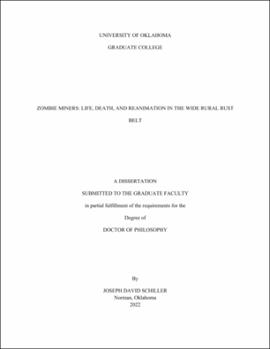| dc.description.abstract | Over the last decade, activists and mining historians have used the concept of zombie mines to show that extractive sites have social and environmental afterlives that beckon after closure. They manifest in toxic water, air, and soil, and often in the bodies of humans and nonhuman animals long after mines’ productive lives. In this history of the Picher Field and subsequent Tar Creek Superfund site in northeastern Oklahoma, I argue that the zombie miner was an equally powerful social force. In the early twentieth century, mine operators leased Quapaw tribal land and white, native-born miners excluded Quapaw people, Black Americans, and especially immigrant labor radicals from their camps and workforce. Under “the poor man’s camp” ideal of upward mobility from worker to owner, these miners opposed labor unions and their demands for environmental and safety regulations. Guarding the poor man’s camp, they made a “white man’s camp.” And they suffered nation-leading rates of silicosis and tuberculosis. This foundation informs how this place in what I call the wide rural Rust Belt experienced the end of its industry and pursued permanence after midcentury. The memory of idealized white, hardy miners influenced how the community imagined permanence and enacted remediation of dangerous mine waste. Zombie mines and zombie miners awakened together in deindustrialization. This history moves beyond a notion that deindustrialization has a region—the Rust Belt—instead revealing a process that deeply influenced many sites of rural industry across the twentieth-century United States. This process points to the many scales at which these communities experienced deindustrialization, from bodies to the region, nation-state, and globe. An environmental history of race and labor, “Zombie Miners” illustrates the hollowness of racial exclusion as a bulwark against the ecological and economic calamities of deindustrialization. | en_US |
